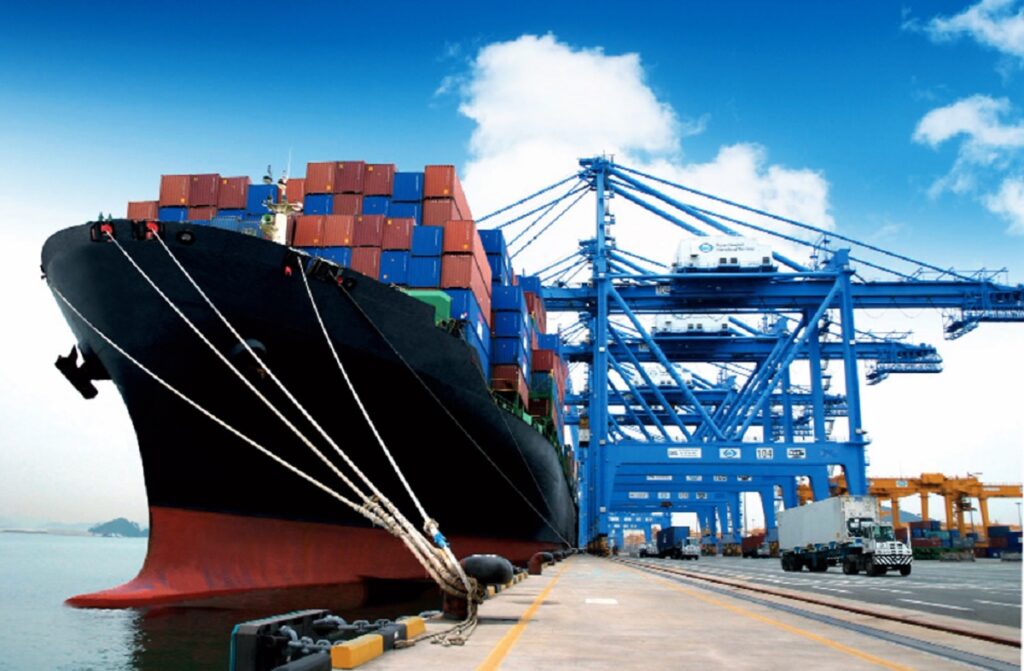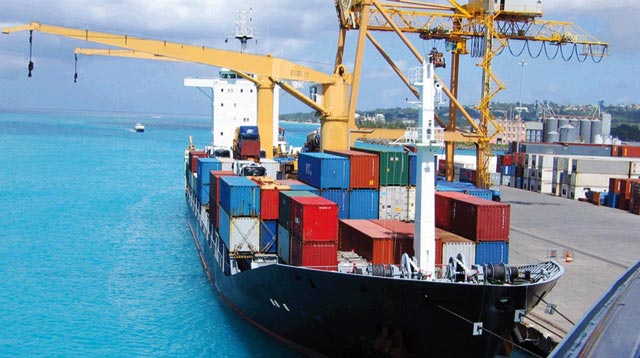[ad_1]
« Zéro papier et zéro contact », dans tous les passages frontaliers, où les échanges commerciaux sont importants, devrait être la maxime de tout décideur public soucieux des intérêts de l’Etat. Il s’agit de dématérialiser toutes les opérations de traitement et d’émission des autorisations. La généralisation de la digitalisation des procédures de commerce extérieur est aujourd’hui un impératif pour limiter les pratiques malsaines normalisées dans les passages transfrontaliers à forte dimension commerciale.
« Le port de Radès concentre plus de 80% du trafic de conteneurs et demeure le maillon déterminant de l’intégration de la Tunisie dans les chaînes de valeur régionales et mondiales, ses indicateurs de performance sont en baisse depuis déjà une décennie. Avec un délai de séjour des conteneurs dans le port de Radès de 18 jours par an en moyenne (contre 10-12 jours il y a dix ans et 6-7 jours dans des pays comme le Maroc), le coût de l’inefficacité des différentes parties prenantes (dont les douanes, les centres en charge du contrôle technique, Tunisia Trade Net, la Société tunisienne d’acconage et de manutention, l’Office de la marine marchande et des ports, les banques) est très lourd pour l’économie tunisienne. Une réduction de 10 jours des délais d’importation équivaudrait à une diminution des prix à l’importation d’au moins 500 millions de dollars, soit l’équivalent de 1,25 % du PIB, voire plus ».
Le constat est de Tony Verheijen, responsable de la Banque mondiale pour la Tunisie. C’était en 2020.
La réduction des délais de dédouanement des exportations d’une journée augmenterait le revenu des exportations tunisiennes de 400 millions de dollars, soit l’équivalent de1 % du PIB expliquait-il. Tony Verheijen est un expert indépendant qui n’a pas été soudoyé pour altérer l’image des pauvres travailleurs de la STAM (sic) ou celle des agents de douane, et encore moins des autorités publiques !
Us diplomatiques obligent, Verheijen n’a pas abordé la question des produits de contrebande dont 70% passeraient par le port de Radès avec un coût économique indescriptible. L’exemple le plus édifiant est celui du secteur du cuir et chaussure et les produits artisanaux. La Turquie et la Chine sont passées par là ! Ceci sans parler des protections « légales » des importations par ceux censés protéger les nationaux ! Il paraîtrait même que le président d’une fédération respectable à l’UTICA importe des portes et fenêtres de Turquie pour concurrencer les producteurs nationaux membres de sa propre Fédération dont quelques-uns ont fait faillite à cause de la concurrence déloyale et du bradage des prix ! Kafkaïen !
La résistance au port de Radès !
Tony Verheijen n’a pas non plus parlé de la résistance des acteurs sur place au port de Radès, unis par une alliance stratégique et des partenariats hautement gratifiants (resic). Qu’il s’agisse des agents de la Stam (meneurs) maîtres à bords dont navires et cargaisons sont les otages, de certains officiers de douane ou encore de la police frontière qui font la guerre à toute tentative de dématérialisation totale des opérations portuaires, les actes de corruption et les pots-de-vin sont devenus presque un droit acquis.
Il y a 7 ans pourtant, du temps où Mongi Marzouk était ministre des Technologies de la communication (2011/2014), on avait mis en place un plan pour digitaliser toutes les opérations portuaires. On y a investi 6 millions de dinars. Il s’agissait d’installer un système où la communication et l’information se faisaient par des canaux de transmission hertziens dont on ne pouvait altérer les câbles. Les caméras de surveillance seraient placées à de grandes hauteurs, pour qu’on ne puisse pas les atteindre. Elles sont toutes reliées au système Senda et connectées entre elles pour assurer une vue d’ensemble sur tous les processus de chargement et de déchargement des cargaisons.
Partant de là, grâce au système de dédouanement dématérialisé, on aurait pu limiter les mauvaises pratiques et améliorer les scores du port. A ce jour, c’est un vœu pieux !
A Ras Jedir, la surveillance digitalisée est impérative
30% des produits de contrebande et de commerce parallèle passent par Ras Jedir, un lieu de passage frontalier où tout devrait être surveillé par des caméras. A Ras Jedir, on avait travaillé sur un dossier pour l’implantation de caméras qui peuvent filmer sur 6 km à la ronde, et ce dans les détails les plus infimes.
Le principe est qu’un camion contenant des marchandises contrôlé en zone sous-douane ne soit pas soumis au droit de route s’arrêtant à tout bout de champ et risquant la sempiternelle incantation : « afrah bia » !
La fouille des passagers ou des camions de marchandises relève de la responsabilité de la douane, les postes frontaliers étant des zones sous-douane. Pourquoi dans ce cas, on y fait participer tous les corps sécuritaires ? Et si tous les corps procèdent aux fouilles, comment définir les responsabilités en cas de dépassement ?
Il est honteux aujourd’hui que des opérateurs travaillant en toute transparence et disposant de toutes les autorisations possibles et imaginables, contrôlés comme il se doit aux postes frontaliers, soient malmenés depuis leur entrée sur le territoire national jusqu’à l’arrivée à destination, soudoyés par des douaniers, ou des agents de la garde nationale faisant leurs rondes « bien primées ».
Aujourd’hui, on laisse passer des camions transportant des produits illicites ou prohibés menaçant les produits locaux, et bénéficiant de la protection du « système de solidarité dans la corruption »
La corruption ne peut venir que des organismes de contrôle protégés par l’immunité et agissant en toute impunité ! Qui perd au change ? bien évidemment les consommateurs qui voient les prix des produits et des biens flamber, et l’Etat.
Installer des caméras à Ras Jedir et simplifier les procédures, cerner les responsabilités et instaurer les traditions d’une coordination entre les parties prenantes des opérations transfrontalières et de dédouanement, éviter que toute entité opère séparément, limiterait les risques de malversations et optimiserait le rendement commercial.
Aujourd’hui, on laisse passer des camions transportant des produits illicites ou prohibés menaçant les produits locaux, tels que les produits artisanaux, et bénéficiant de la protection du « système de solidarité dans la corruption ». Dans les souks, seulement 3 à 4% des produits artisanaux sont tunisiens, le reste est composé d’importations chinoises et turques. Le ministère du Commerce est aux abonnés absents ! A se demander à quoi servirait ce ministère qui n’arrive même pas à contrôler les prix dans les marchés publics.
On a vu de mauvais germes et plantes débarquer dans notre pays. Ils ont, entre autres, anéanti des plantations de dattes ou d’oliviers tunisiens auparavant connus pour leur haute qualité. Certaines plantes ou des races d’abeilles productives importées se nourrissant de plantes imprégnées de résidus de pesticides sont nocives pour la santé produisent du miel impur.
Résultat : nous avons des oasis malades et des plantations d’oliviers altérés à cause de l’absence manifeste de la volonté de l’Etat à mettre fin à ce genre de trafic. Presque tous ces produits passent par des frontières officielles et non par les routes escarpées montagneuses.
Le problème des grands passages frontaliers est le jeu de rôle entre différents corps des forces de l’ordre, allant de la police frontière, la douane, les gardes frontaliers
Le problème des grands passages frontaliers est le jeu de rôle entre différents corps des forces de l’ordre, allant de la police frontière, la douane, les gardes frontaliers et parfois – quand c’est proche des zones militaires – l’armée nationale. Comment faire pour définir les responsabilités sachant qu’en zone sous douane, la responsabilité doit incomber en prime à la douane ?
Le plus simple serait peut-être de s’entendre sur un corps de contrôle qui assumerait la responsabilité en cas de défaillance. Entre agents de douanes et militaires, une coordination plus efficiente permettrait aux douaniers d’assurer leur mission dans les zones militaires qui ne doivent pas être exemptes du contrôle. Le rôle des militaires n’est-il pas d’ordre purement sécuritaire, à savoir la protection des frontières nationales des intrusions des terroristes et des individus qui représentent une menace pour l’Etat ? Les douaniers, eux, veillent à la sécurité économique, et par là même, leurs vis-à-vis dans les autres corps doivent leur faciliter leur mission.
A chacun son boulot avec un seul objectif : efficience, réduction de la corruption et sécurité physique et économique du pays.
Serait-ce un rêve dans la Tunisie d’aujourd’hui ?
Amel Belhadj Ali









